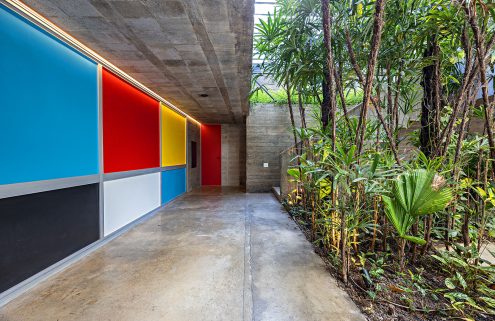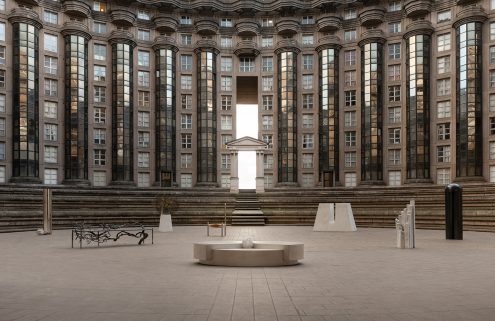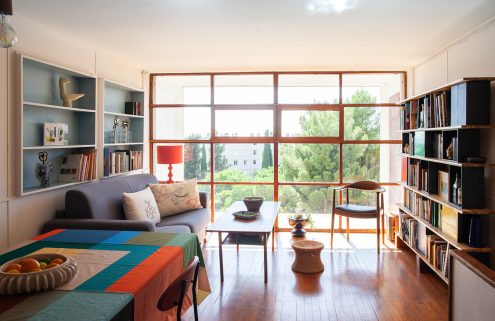Explore Berlin’s turbulent history through its striking collection of postwar concrete buildings, curated in Blue Crow’s new pocket-sized architectural guide.
Map creator Felix Torkar writes how unique and fertile postwar Berlin was for the era’s architects, for ‘nowhere in the world did the opposing sides of the Cold War converge in such a tight space’, with the city physically and ideologically divided. He also says its architects were subliminally designing fortress-like projects as a response to the threat of nuclear war, particularly prevalent in the German capital.
The innovativeness of Berlin’s brutalist architecture has been underappreciated, leading to them either falling into dilapidation, extensively renovated or flattened by the wrecking ball. There is hope, though, of a brutalist renaissance in the city, Torkar says, pointing to a growing number of historical protection policies and a budding neo-brutalist architectural movement.
Discover Berlin’s most radical concrete buildings.

Zentrale Tierlaboratorien ‘Mäusebunker’, by Gerd Hänska and Magdalena Hänska, 1968–81
This military-like trapezoid building, likened to a Star Wars Star Destroyer and a naval warship, was once animal testing labs, earning it the nickname ‘Mousebunker’. Its enclosed hulking form in Lichterfelde is ventilated by cannon-like pipes and triangular windows angled for indirect light. The remote, well-photographed fortress was saved from demolition last year though its future remains uncertain.
Photography: Felix Torkar. Courtesy Blue Crow Media

The Spitteleck by VEB Bau-und Montagekombinat, Eckart Schmidt, 1980–85
Mixed-use complex Spitteleck is a visual symbol of Soviet optimism, with its bold, undulating, prefab design featuring vertical rows of curved balconies that celebrate concrete’s sculptural qualities. The Mitte building featured on a GDR postal stamp and in The Bourne Supremacy film (2004) and is topped, ironically, with a Coca-Cola sign that was added shortly after the wall came down.
Photography: Felix Torkar. Courtesy Blue Crow Media

St Agnes church, Werner Düttmann, 1965–67
Werner Düttman’s simple, cubic design for this Kreuzberg former catholic church made it ideal for its new life as a gallery space, created by art dealer Johann König. Its stark interior has high plastered walls sat on recycled brick floors, and light is beamed in through two vertical window slits and roof skylights. The adjoining campanile-style bell tower is a solid concrete form with a square top appearing to float above it.
Photography: Felix Torkar. Courtesy Blue Crow Media

Corbusierhaus, Le Corbusier, 1956–58
Corbusierhaus is Le Corbusier’s Berlin version of his unité d’habitation concept, which focuses on communal living and aimed to bring villa living to a high-rise. The 530-home Westend block is not an exact copy of its French counterpart since the apartment dimensions had to be changed to meet German building regulations (creating roomier homes), slightly altering its façade.
Photography: Felix Torkar. Courtesy Blue Crow Media
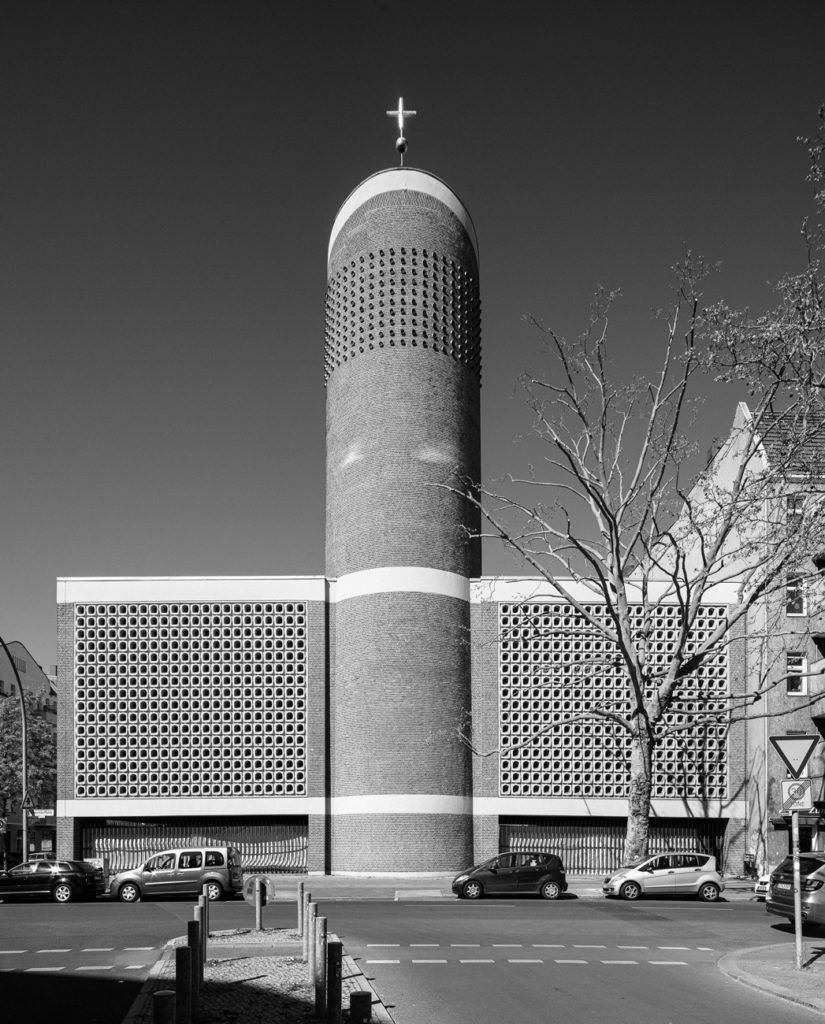
Kirche Mariä Himmelfahrt (now Mor-Afrem-Kirche), Alfons Boklage, 1964–66
At this now Syrian Orthodox church, Boklage makes the transept a nave and merges the apse (a circular recess) with the spire, putting a modern spin on the traditional church design. The wedged-shaped building in Charlottenburg has a square floor plan, and forming its front façade are two concrete walls punctured with stained glass-filled holes flanking a soaring brick volume.
Photography: Felix Torkar. Courtesy Blue Crow Media
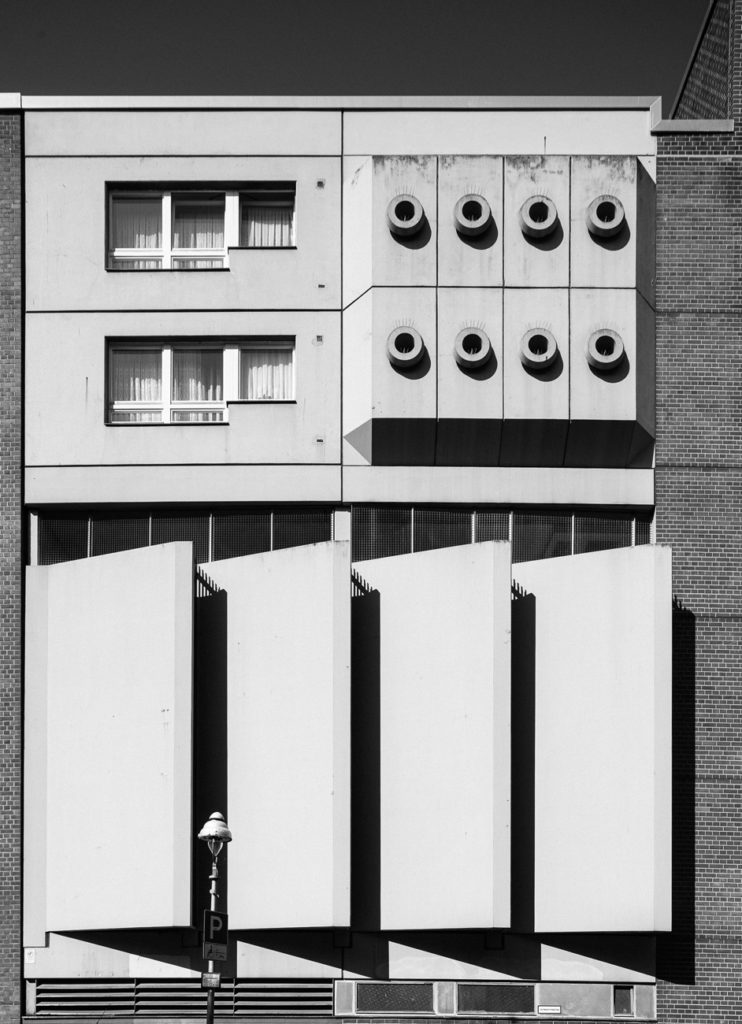
Parkhaus & Wohnanlage, Kirchbachstraße 1–2, Peter Heinrichs, Joachim Wermund, 1977–79
This Schöneberg housing scheme – described as a ‘sanguine 1970s glimpse into the high-tech future’ – has an assortment of geometric shapes stuck to its façades in a quirky composition, forming its balconies, light supply and window frames. It has postmodern, analogue technology vibes and is covered in recently added urban-style murals, adding to its sense of fun.
Photography: Felix Torkar. Courtesy Blue Crow Media

Isothermische Kugellabore, Horst Welser, 1959-61
Science creates sculptural forms at this Adlershof thermo-constant ball laboratory built for metallurgy experiments at the defunct Academy of Science of the GDR. Appearing like a bold artwork, its twin globes have thick walls of concrete shell construction designed to keep internal temperatures stable needed for isothermal testing.
Photography: Felix Torkar. Courtesy Blue Crow Media
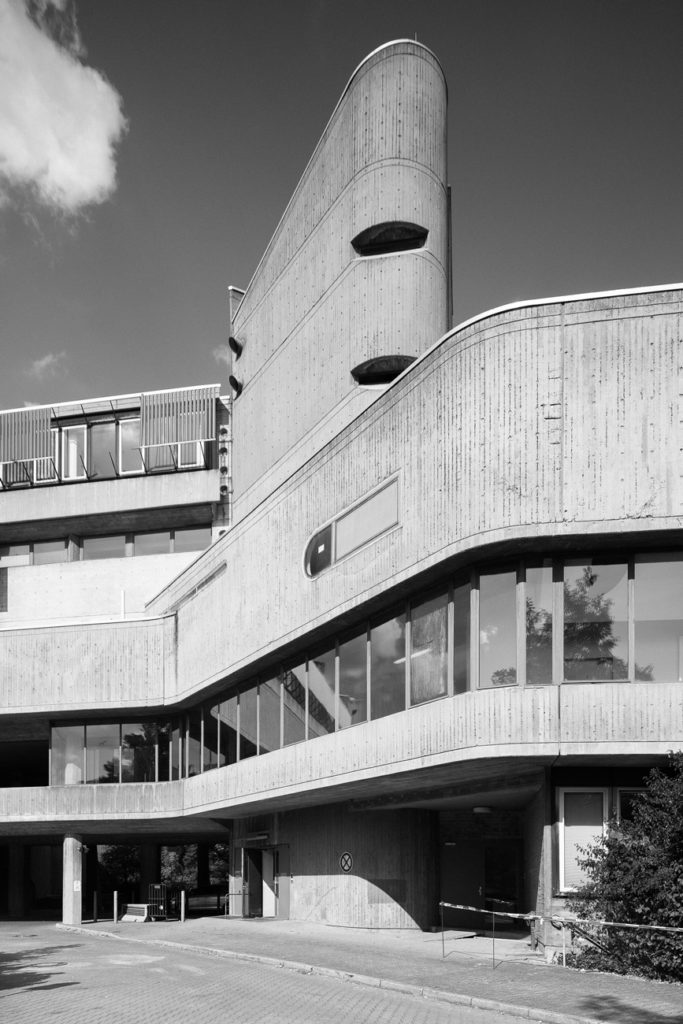
Institut für Hygiene und Mikrobiologie, Fehling + Gogel, 1966–74
This complex, Y-plan Lichterfelde Lichterfelde structure has a symphony of vertical, upward sweeping and horizontal curves, forming one of Berlin’s most impressive examples of organic brutalism. In good condition and hardly altered from its original design, the cast-in-place concrete time-capsule’s longevity is a testament to its design.
Photography: Felix Torkar. Courtesy Blue Crow Media

Kaiser-Wilhelm-Gedächtniskirche (Kaiser Wilhelm Memorial Church), Egon Eiermann, 1957–61
The original, bombed-out part of this reconstructed church complex is an anti-war memorial and has the nickname ‘the hollow tooth’ for its tusk-like look. Instead of rebuilding the 1890s Charlottenburg church around the existing belfry tower and entrance, Eiermann grouped the ruin with three minimalist structures, including an octagonal church with concrete, stained glass-inlaid honeycomb walls.
Photography: Felix Torkar. Courtesy Blue Crow Media
